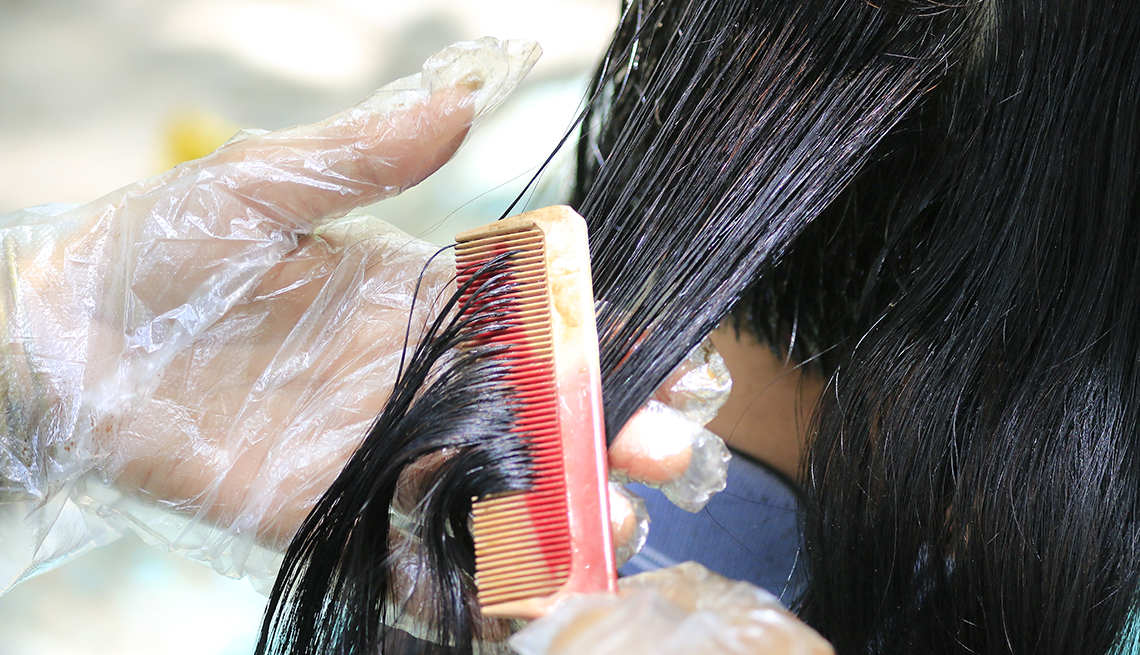
...................................................................................................................................................................
Hair Dye and Chemical
Straighteners Linked to Increased Breast Cancer Risk
NIH study finds risk is higher for black women
by Sarah Elizabeth Adler
AARP
Permanent hair dyes and chemical hair straighteners
may be associated with an increased risk of breast cancer, especially for black
women, according to a study published Dec. 4 in the International
Journal of Cancer.
Researchers at the National Institute of Environmental
Health Sciences, part of the National Institutes of Health (NIH), followed
46,709 cancer-free women ages 35 through 74 for an average of 8.3 years, during
which time 2,794 of them developed breast cancer.
Black women who regularly used permanent dyes (meaning
every five to eight weeks or more) in the year prior to enrolling in the study
had a 60 percent increase in breast cancer risk compared to those who didn't
use permanent dyes.
Among white women who regularly used permanent dyes,
there was an 8 percent increase.
Breast cancer risk was also 31 percent higher for
women who regularly used chemical straighteners, regardless of race.
But the study authors say that association might be
more important for black women, 74 percent of whom reported using chemical
straighteners in the year prior to the study, compared to 3 percent of white
women.
Researchers
have long known that dyes and chemical straighteners can include potentially
cancer-causing and hormone-disrupting compounds, which may affect breast cancer
risk.
The
carcinogen formaldehyde, for example, is an active ingredient in many keratin
hair straightening treatments.
Hair products marketed toward black women have also
been found to contain higher levels of hormone-disrupting chemicals.
The
study authors note that differences in hair texture may also influence how much
dye women use during the application process, and how much is needed or
absorbed.
More research is needed, they say, to identify
specific ingredients that affect disease risk and to better examine the link
between product use and breast cancer risk by racial group.
Only
about 9 percent of study participants in this case were black women, and other
racial groups, like Hispanic and Asian women, were not included in their
analysis.
In a list of frequently asked questions about their
findings, the authors write that chemical hair products are, ultimately, “just
one of many factors” that influence breast cancer risk.
They
suggest that permanent dye users consider switching to semi-permanent or
temporary dyes, which were not associated with an increased cancer risk, and to
take proper precautions while applying dye, like wearing gloves and rinsing the
product out according to instructions.
Black women and breast cancer risk
According to the Centers for Disease Control and Prevention,
black women die of breast cancer more often than white women, even though the
two groups get breast cancer at about the same rate.
Black women are less likely to be diagnosed with the
disease in its early stages, and are more likely to be diagnosed with
triple-negative breast cancer, an aggressive form of the disease that often
recurs after treatment.
Sarah Elizabeth Adler
Staff Writer — AARP
The Magazine
AARP is a nonprofit, nonpartisan organization that empowers
people to choose how they live as they age.
https://www.aarp.org/health/conditions-treatments/info-2019/hair-products-cancer-risk.html
You
might also like:
CLICK
HERE . . . to view . . .
...............................................................................................................
CLICK
HERE . . . to view . . .
...............................................................................................................
CLICK
HERE . . . to view . . .



No comments:
Post a Comment